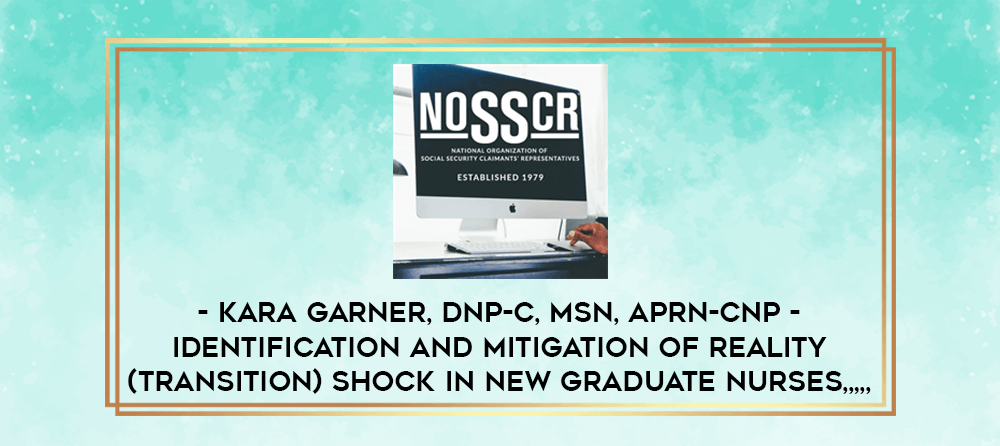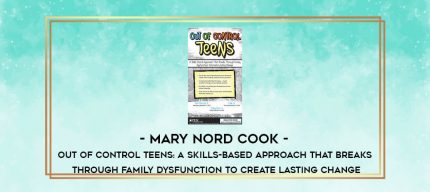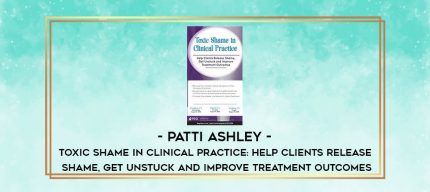Kara Garner, DNP-c, MSN, APRN-CNP – Identification and Mitigation of Reality (Transition) Shock in New Graduate Nurses
Course Description
Archive : Kara Garner, DNP-c, MSN, APRN-CNP – Identification and Mitigation of Reality (Transition) Shock in New Graduate Nurses Digital Download
Salepage : Kara Garner, DNP-c, MSN, APRN-CNP – Identification and Mitigation of Reality (Transition) Shock in New Graduate Nurses
Delivery : Online With Any Device
The research shows that 25% of Newly Licensed Registered Nurses (NLRN) leave their positions within the first year of hire. The decision to leave happens in the first four to six months after hire.
The reason for this decision is due to the Transitional Shock. Transitional Shock is defined as an acute and dramatic change in the process of professional role adaptation by the NLRN and is the experience of moving from the familiar role of nursing student to the professional registered nurse (Boychuck Duchscher, 2009).
There are four phases of Transitional Shock. The first phase is the honeymoon. The NLRN is happy, excited to be out of school, and working at the bedside. They view the other professionals are as eager to work as the NLRN. In this phase, the NLRN focuses on learning new skills to master their new role and meet other health care team members. The next phase is the Shock Phase. In this phase, the NLRN starts to see flaws in the health care system. They may see some healthcare team take shortcuts, lazy, disorganized, and not focus on the quality of their care. The third phase is the Recovery Phase. In this phase, the NLRN comes to reality and realistic expectations towards fellow staff members and the health care system. The last phase is Resolution. In this phase, the NLRN may feel that they can lower their care standards to fit in with the seasoned team members (Ciocco, 2016).
The research shows that 25% of Newly Licensed Registered Nurses (NLRN) leave their positions within the first year of hire. The decision to leave happens in the first four to six months after hire.
The reason for this decision is due to the Transitional Shock. Transitional Shock is defined as an Acute and dramatic change in the process of professional role adaptation by the NLRN and is the experience of moving from the familiar role of nursing student to the professional registered nurse (Boychuck Duchscher, 2009).
There are four phases of Transitional Shock. The first phase is the honeymoon. The NLRN is happy, excited to be out of school, and working at the bedside. They view the other professionals are as eager to work as the NLRN. In this phase, the NLRN focuses on learning new skills to master their new role and meet other health care team members. The next phase is the Shock Phase. In this phase, the NLRN starts to see flaws in the health care system. They may see some healthcare team take shortcuts, lazy, disorganized, and not focus on the quality of their care. The third phase is the Recovery Phase. In this phase, the NLRN comes to reality and realistic expectations towards fellow staff members and the health care system. The last phase is Resolution. In this phase, the NLRN may feel that they can lower their care standards to fit in with the seasoned team members (Ciocco, 2016).
Kara Garner is DNP student at the University of Utah in nursing administration. She practices as a Nurse Practitioner at St. Luke’s Hemophilia Center. Her DNP project focus is integration of Transitional Shock awareness into preceptor programs so that nurse preceptors have an increased awareness of pending issues amongst new graduate nurses and can implement mitigation strategies to help retain the new graduate nurse in the workplace.
Course Objectives
Objective 1
Discuss the concept of Transition Shock and its impact on the new nurse.
Objective 2
Present outcome research on the impact of Transition Shock.
Objective 3
Discuss the components of a preceptor education program aimed at early identification and mitigation of Transition Shock.























Reviews
There are no reviews yet.